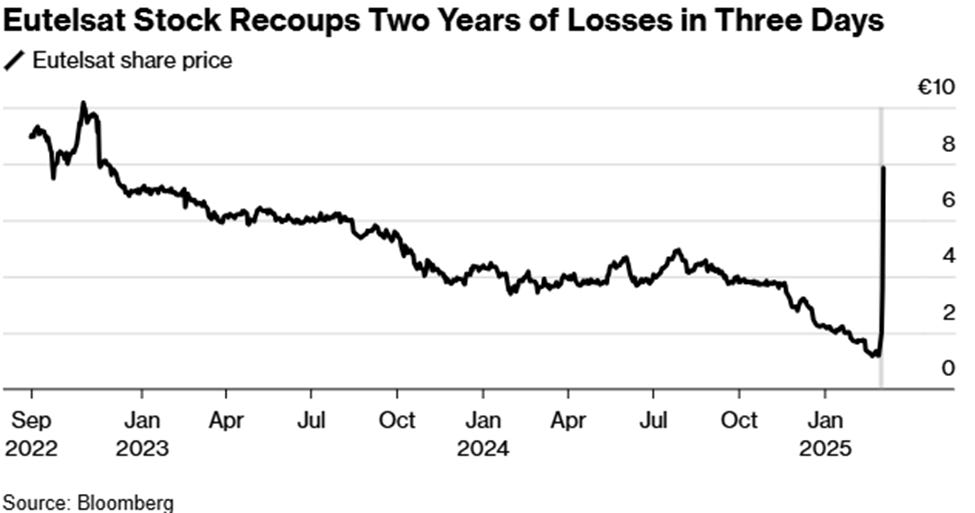(…continued from Part 3…)
***
Equipment
Ukraine had some issues with Starlink before and the US government stepped in to be the operational interface between Starlink and Ukraine. Multiple reports say Ukraine uses 42,000 terminals, but some are reporting the use of over 100,000 terminals. The Washington Post says they have 47,000, of which 24,500 were provided by Poland, 10,000 by Germany and 5,000 by the US Agency for International Development (USAID). They also have 3,000 Starshield terminals, a militarized version that is more resistant to hacking and jamming.
Reuters reported that the current US government threatened to cut off Ukraine’s access to Starlink if they didn’t sign the minerals deal. Zelensky and Musk denied the report (Musk did so after stressing that Ukraine would collapse without the StarLink). Poland paid $30 million in operating fees for the terminals last year and will pay $47 million in 2025. The contract runs through 2025 and Poland says that terminating it would cause a big international relations crisis.
…but then the US is currently involved in multiple international relations crises….
A Ukrainian government official said that the nation was heavily dependent on Starlink for communications and imagery in 2022 and 2023, but the front line is saturated with fiber-optic cables, high-speed modems, German and Swedish satellite options, and that Ukrainians are considering radio relay stations. Multiple sources say that losing StarLink would degrade capabilities but they would still be able to function.
Ukraine and Europe are working to reduce America’s leverage over Ukraine by exploring alternative networks, such as Govsatcom and Eutelsat. Govsatcom is a temporary network that uses existing EU satellites as an interim solution until the IRIS2 constellation is established in the 2030s. IRIS2 is being built by three European satllite operators: Eutelsat, Hispassat and SES.
Eutelsat has thousands of terminals in Ukraine now, but not all of them are on the network. It would take “a couple of months” to produce 40,000 standard and military-grade terminals. They would need financial and logistical support to quickly produce that many terminals. Its terminals are not as cheap or mobile as Starlink and they have 600 satellites at an altitude of 1200 km compared to 7000 Starlink satellites at an altitude of 550 km. The lifespan of a satellite constellation is shorter at lower altitudes and more satellites are needed to provide global coverage, but the lower altitude network has a faster connection and improved communications. On any given day there might be 30-40 Starlink satellites over Ukraine while Eutelsat might have access to 5 to 15, but they also discussed placing additional geostationary satellites over Ukraine for dedicated service. It could take years before Eutelsat could provide a service on par with Starlink, but it would be able to provide a functional service.
For comparison (and a bit oversimplified),
StarLink works like this:
laptop => T1 => satellite => internet exchange => satellite => T2 => laptop
Eutelsat works like this:
laptop => T1 => satellite => T2 => laptop
(…with thanks to Branislav for explanation!)

Some Ukrainians say losing Starlinks would be bad, but Russia gaining access to it would be worse. If Trump removes sanctions on Russia, Russia would be a huge market for SpaceX and the huge communication and data transmission advantage that Ukraine has would disappear.
Russian forces that acquired Starlink terminals through third party sales had better coordination between assaults, flew more drone sorties and had more accurate artillery fire. Illegal Russian terminals have been shut down before, but there are workarounds. Ukrainian forces in Kursk found that their terminal did not work but by interrupting the software update process and altering the GPS settings they managed to reestablish communications. Russians have found similar workarounds for different measures used to shut them down at various times.
***
Maxar provides commercial satellite imagery and has a contract with the US National Geospatial-Intelligence Agency (NGA). The US makes the imagery available to its partners and allies through the Global Enhanced GEOINT Delivery system. As part of the decision to stop sharing intelligence with Ukraine, the NGA removed Ukraine’s access to the system. Ukraine could still access the imagery by buying it themselves… until the administration forced Maxar to stop selling to all Ukrainians, both government and private citizens. France offered its services.
Some in Ukraine’s military regard the decision as treachery, not politics. An intelligence officer in Kursk said that they will lose some speed and accuracy but it is not decisive. Another officer in Pokrovsk said it wasn’t a tragedy, that they will use their own plans.
Another impact is that US assets are more common far beyond the front lines and they often provided coordinates for Russian air defense systems and logistical hubs. Those coordinates beyond 64 km are no longer provided. The same is true for long-range drone teams. These attacks used to degrade Russian capabilities. The absence of them will cost Ukrainian lives.
***
Zelensky said 30% of the weapons used by Ukraine were provided by the US. 40% of the weapons were made in Ukraine.
Not to be outdone by the Russians, the Ukrainians drop a FAB-10000 bomb on a bunker. The printed bomb casings hold 10 kg of explosives.
***




Amy info on the topic of Ukrainian F16 EW packages not updated any longer by US? For me that is definitely something with pinch of salt - if something that info would not be available through OSINT channels? Clearly Mirage 2000-5 now in hindsight has no US dependence...which is clearly a much more important factor
Thanks Tom and Don, Ukrainian mitigation efforts of the affected means provided by the US should be double time and smart NOW, otherwise the result will snowball.
Waiting for further updates, thanks again gentlemen.